2-for-1 VHH antibody engineering
Humanising and improving antibody affinity all in one step
Sometimes the smallest of molecules pose the greatest challenges. This was the case when a partner approached us with what turned out to be a VHH antibody engineering challenge. Initially, the task was discovering VHH antibodies (sometimes known as nanobodies or single domain antibodies) from our vast LlamdA® library, targeting a complex cell surface antigen for therapeutic payload delivery.
This particular target had proven challenging in the past due to its dense cloak of glycosylation, making it harder for antibodies to find a binding surface. Despite a paper describing a clinical-stage VHH against the same target, its development had not been straightforward, and the best KD the authors observed was approximately 40 nM.
With this in mind we knew we might encounter some challenges – but we do love a challenge!
The challenges
An initial VHH antibody discovery campaign using our >10¹² LlamdA® synthetic library yielded promising results, with rapid isolation of clones exhibiting affinities in the range of 46 nM to 60 nM, as measured by Surface Plasmon Resonance (SPR). Although this was comparable to the clinical-stage VHH from literature, the partner had been hoping to improve against this benchmark.
Thus, we faced two challenges:
- Enhancing the affinity of our isolated clones to make them more potent than the benchmark.
- Given their origin from Isogenica’s first library, based on llama-derived frameworks, humanising these clones was also essential for progression of therapeutic molecules.
The toolbox
Humanisation of VHHs, is typically done gradually, with one or two residues tweaked at a time. However, an alternative approach—CDR grafting—can be achieved faster, albeit with its share of risks.
This method involves inserting the ‘donor’ antigen-specific Complementarity Determining Regions (CDRs) into pre-existing humanised ‘acceptor’ frameworks. In theory it works, but it is rare to meet antibody engineers who have had reliable success with it.
Crucially, our sequence analysis revealed a useful insight: significant amino acid conservation within the CDR3 region of our lead clones, converging into two dominant sequence families. This suggested that the CDR3 of the ‘donor’ clones was likely to play the pivotal role in antigen binding. With only one CDR graft needed instead of three, we rationalised that there was probably a more preferable combination of CDR1 + CDR2s that could help support a grafted construct.
Thanks to the evolution of Isogenica’s LlamdA® library over time, we leveraged a diverse array of tools at our disposal, including an acceptor vector primed for new CDR3 fragments, with diverse and liability-free CDR1 and CDR2 cassettes already embedded within humanised frameworks.
A new strategy formed: transplanting the CDRs from our top two lead clones into this acceptor vector. This promised a less precarious path to humanisation, with sufficient flexibility in selecting CDR1 and CDR2 variants, creating enough space to ensure correct CDR presentation in at least a subset of clones. Concurrently, this approach enabled simultaneous selection of higher affinity binders through the pursuit of novel CDR combinations, combining humanisation and affinity maturation into a single process.

Following the construction and QC of our libraries (both in excess of 4.7X10¹⁰), rigorous rounds of selection and screening against the target antigen began. Evaluating against the performance of the parental clones, a lead panel emerged. This lead panel was purified from a high-throughput E. coli expression system and characterised relative to both parental ‘donors’ and the clinical benchmark.
Interestingly, one library proved much more successful than the other – potentially due to the relative binding potency of the two CDR3s, or differences in their abilities to tolerate the new structural context of the humanised frameworks.
The readout

In the nuanced world of antibody engineering, where considerations extend beyond affinity to encompass humanisation, stability, and manufacturability, striking a delicate balance between these characteristics is often necessary. Remarkably, in this instance, we reached a humanised lead panel without compromising on affinity—and instead improving it beyond the benchmark (Table 1).
The legacy
Alongside the positive outcome for the partner, as this proof-of-concept study shows, there is real value in having a well-stocked molecular biology toolbox. This helps projects – even the very novel ones – move much faster.
As Isogenica continues to iterate and improve its library technology, we are always adding more tools to tackle interesting and tricky VHH antibody engineering projects like these. And this project was a great opportunity to put these DNA based tools to the test.
Here at Isogenica, we share our experience in VHH antibody discovery and engineering to help move innovative projects forward. Contact our experts today to find a solution to your challenge.
